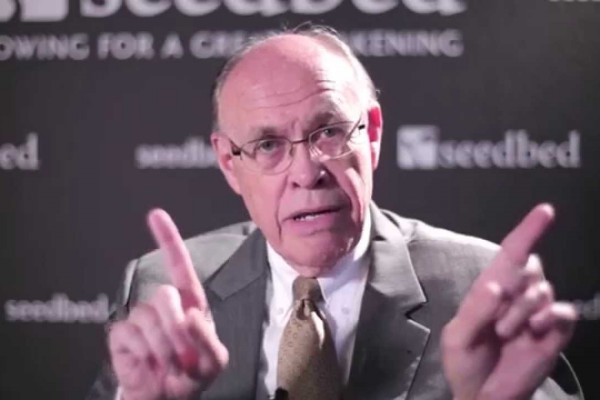Click to join the conversation with over 500,000 Pentecostal believers and scholars
Click to get our FREE MOBILE APP and stay connected
| PentecostalTheology.com



Book Reviews
277
Gijsbert Van Den Brink, Eveline Van Staaldune-Sulman, and Maarten Wisses
(eds.),The Spirit is Moving: New Pathways in Pneumatology. Vol. 38,Studies in
Reformed Theology(Leiden,NL: Brill, 2019). 410 pp. $79.00 paperback.
The Holy Spirit has been coming to the forefront of theological reflection in the last decades due to the shift of World Christianity from the Global North to Global South and the spread of Pentecostals/Charismatics movements around the world. The Spirit is Moving is a collection of essays that were written as a tribute to the theological contributions of professor Cornelis van de Kooi on the occasion of his retirement as Professor of Systematic Theology at the Fac- ulty of Religion and Theology, Vrije Universiteit Amsterdam, where he taught from 1992–2018. Not only is it a tribute to van de Kooi, but also a theological engagement to his writing and a theological contribution to various theologi- cal disciplines.
The book has contribution from scholars such as Eep Talstra, Bruce L. Mc- Cormack, Richard J. Mouw, and Carl J. Bosma and others. The book has two major aims. First, to discuss the pneumatological renaissance in the different theological disciplines. Second, to dialogue with van de Kooi pneumatologi- cal contributions to different areas of theological reflection. In general, the book deals with the question of how and where the Holy Spirit is moving in individuals, in church and the world. The volume contains twenty-four essays that reflect on pneumatology scripturally, theologically, and missiologically. The chapters are framed into five major categories: the relationship of the Spirit with the Bible, Christ, humans, church and the world.
Gijsbert van den Brink, Eveline van Stallduine-Sulman and Maarten Wisses introduce the book mentioning four reasons why pneumatological renaissance has occurred: first, the shift of Western societies from modern to postmodern thinking; second, the rise of the ecumenical movement of the twentieth cen- tury; third, the rise of interest in the Holy Spirit in the academy and at a grass- roots level; fourth, contemporary biblical-theological scholarship contributes to a renewed focus on the role of the Holy Spirit. New pathways in pneumatol- ogy are explored in this volume to find out where the Spirit is moving and how it is shaping Christian thought and practice today.
A good example of these new pathways of the Spirit that are being explored is the chapter written by Benno van den Toren, “Discerning the Spirit in World Religions: The Search for Criteria,” where the reader is invited to explore some critical issues concerning the Christian task of “discernment of spirits” in non- Christian religious communities. There are two central questions in this chap- ter. If the Spirit is at work in other religions, how can we know that it is the Spirit? Can we provide criteria for discerning the Spirit and, if we can, which
Pneuma
© koninklijke brill nv, leiden, 2020 | doi:10.1163/15700747-04202008
1
278
Book Reviews
criteria? Van den Toren discusses the four criteria of missiologist Kirsteen Kim: ecclesial, ethical, charismatic and liberational criteria. He proposed to add a new criterion which is to call God “Abba, Father” as a sign that the Holy Spirit is at work. Van den Toren concludes that we do need a “dynamic criteriology,” which is developed in the context of the community and that discernment goes hand in hand with a witness to the cross using a Trinitarian framework.
Cory B.Willson in his chapter, “Of Muddy Boots & Roadways: BecomingThe- ologians of the Word and the Spirit,” explores how Latin American evangelical theologians have developed a contextual pneumatology, that arises from a con- text of oppression, poverty, and suffering. Their pneumatological construction moves from the balcony to the road. This means that a theology of the road begins with the living needs, questions, and circumstances of the particular people. It is a theology invested in the life and mission of the community they seek to serve. Willson argues that “moving from the balcony to the road enables theologians to consider the fresh work of the Spirit in the everyday lives of Christians.” In other words, if we want to construct new pneumatologies that address the new challenges of today’s world, we must engage with the context, listen to the lay people and discern how the Spirit moving.
The two chapters that were highlighted here are a snapshot of what the book offered. It provides a good range of what are the “new pathways in pneumatology,” offering discussion of biblical scholars engaging with Old and New Testaments, scholars engaging historically/theologically, scholars engag- ing with contemporary missiological issues, scholars engaging with practi- cal theology, and scholars approaching the topic from different contexts and Christian denominations. The book makes clear that pneumatology is being explored from the different theological disciplines and from different angles. Pneumatology is a trend in the era of World Christianity.
The book is good introduction to the interdisciplinary discussion that is hap- pening around pneumatology. The great value of this volume could be seen in the interdisciplinary approach taken to discuss the major trends and recent issues in pneumatology. These articles are fanning the flame of research in pneumatology. The reader must be aware that some of the essays are very deep and sometimes difficult to understand if your area of expertise is not the one being discussed. No doubt that this volume shows the new interest that is aris- ing in the field of pneumatology.
Overall, the book is recommended for those who want to be introduced to pneumatology from different theological disciplines and perspectives. It is important to note that pneumatology is a trend in recent scholarship and con- tinues to expand. The Holy Spirit has been moving over the earth since the beginning of creation and in comparison, to other theological topics, little has
Pneuma 42 (2020) 263–323
2
Book Reviews
279
been written about it. In recent years, however, pneumatology literature has been flourishing. This volume adds to the knowledge of theological, biblical, and missiological approaches to pneumatology. If we want to capture what the Spirit is doing, we cannot observe only from the balcony, we have to be on the road with the people. These new pathways in pneumatology are pointing to new directions and ways of doing theology. As is shown in the book, Majority World practitioners and scholars have begun renewed reflections on the role of the Spirit in the world, the church, other religions, and individuals. We have to pay close attention to their voices.
Reinaldo I. Gracia Figueroa
Asbury Theological Seminary, Wilmore, Kentucky,USA reinaldo.gracia.figueroa@asburyseminary.edu
Pneuma 42 (2020) 263–323
3




Anonymous
The Holy Spirit began His indwelling ministry at Pentecost and has not changed. He is NOT “moving in new pathways.”